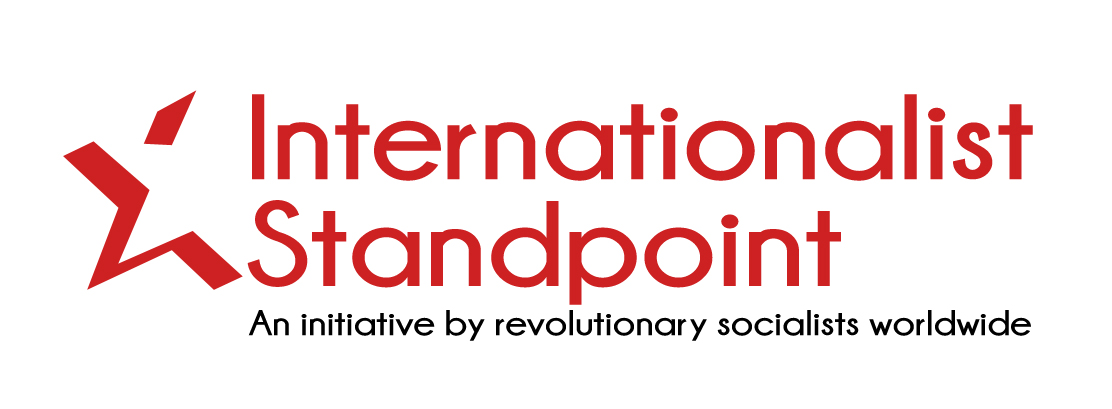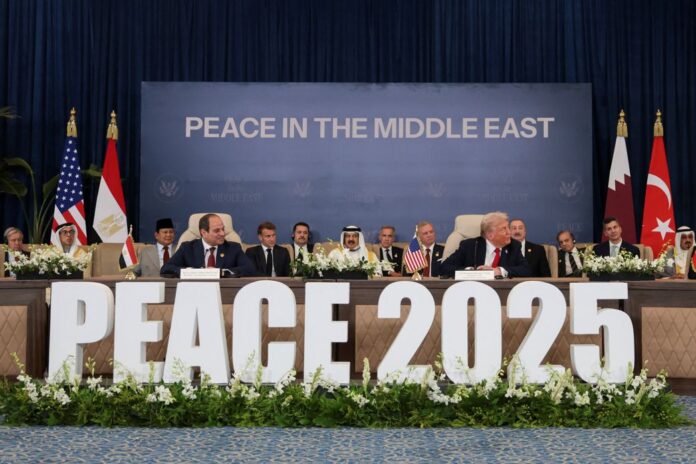On September 29, Trump’s plan for “peace” in Gaza was presented. On October 13, delegations from 20 countries met in Egypt at a “peace summit,” where the plan was approved. Trump presented his plan for “peace” in the Middle East “after 3,000 years,” as he put it, with great fanfare.
Palestinian refugees in Gaza began their journey back to their towns and villages –many on foot, since they could not afford to rent trucks for transport– relieved and even celebrating what they hope marks the end of the genocidal war that Israel launched against them. In Israel, people also celebrated the end of the war, and especially the return of the hostages. Internationally, there was relief that Israel’s genocidal policy might have finally been halted.
Whenever a war ends, the Left cannot but welcome it – because above all, human lives matter most. Given this, that is, that the ceasefire is something positive, the Left must then take a position on the substance of the agreed proposals and assess where they lead. Do they actually solve the problem – will there finally be peace? Or is this merely a temporary pause in hostilities that will lead to new cycles of bloodshed in the future? And if it is the latter, in what way could the problem truly be solved?
Trump’s Plan
Trump’s plan consists of two phases. The first concerns the cessation of Israel’s offensive and the release of the hostages held by Hamas, in exchange for the release of 250 Palestinians serving long prison sentences and around 1,700 prisoners of war.
This is the “easy” phase – though even this is not simple, as Israel refuses to release some of the imprisoned leading figures of the Palestinian resistance, particularly Marwan Barghouti, a heroic figure of the Palestinian struggle often described as “the Nelson Mandela of Palestine”. Also, Israel refuses to allow humanitarian aid to run smoothly, using as a pretext the fact that the Palestinian side is not in a position to hand over immediately all the hostages who died in the course of the war.
The second phase, however, is infinitely more complex.
Trump’s plan (see the BBC’s summary of the terms) includes, among other things, the following provisions:
- “Gaza will be de-radicalized,” turned into “a zone free of terrorism or threats to its neighbors”.
- After the exchange of hostages and prisoners, amnesty will be granted to Hamas members who surrender their weapons.
- Then, Gaza’s governance will pass to a “temporary, transitional, technocratic, non-political Palestinian Committee”.
- This Committee will be overseen by an international body called the “Peace Council”, chaired by Trump himself.
- The Palestinian Authority (which has ruled the West Bank without elections for about 20 years) under President Mahmoud Abbas will have to undergo a process of transformation or self-reform — in short, to abolish bureaucracy, corruption, and nepotism, to function along Western parliamentary lines, and to create favorable conditions for investment and economic growth.
- Once the PA completes this self-reform, it can take control of Gaza.
- “Hamas agrees to have no role whatsoever in the governance of Gaza – not directly, not indirectly, or in any form”.
- All military facilities and weapons will be destroyed and confiscated. Gaza will be demilitarized under the supervision of international observers.
- The U.S., together with Arab and other allies, will deploy a temporary “International Stabilization Force” (ISF).
- The Israeli army will gradually and in stages hand over parts of Gaza to the ISF until Gaza is free of any terrorist threat.
- Once all this is achieved in Gaza, and the PA has completed its transformation process, then “the conditions may finally be in place for a credible pathway to Palestinian self-determination and statehood”.
Is This Realistic?
In other words, Gaza will be placed under the political guardianship of a foreign government and a foreign army. The Israeli army will withdraw only gradually, and only once the conditions of Hamas’s disarmament, the destruction of all military facilities, Gaza’s “de-radicalization,” and the PA’s self-reform in the West Bank have all been met. Hamas will fully relinquish power and have no involvement, direct or indirect. If all this takes place, then perhaps the conditions will be created to begin discussions on the formation of a Palestinian state.
Netanyahu, however, before “the ink had even dried” on the agreement, declared that there will never be a Palestinian state.
Hamas, on the other hand, declared that it refuses to disarm and to give up all forms of power, as long as the occupation by the Israeli army continues.
Trump responded by saying that if Hamas does not disarm itself “we will disarm them”.
The party that actually has every reason to seek for pretexts to break the ceasefire is the Israeli regime, whose goal remains the total destruction of Hamas, the continuation of the occupation and the en masse expulsion of Palestinians from Gaza. Of course, it will aim to do this only after recovering the hostages held by Hamas and its allied organizations — to limit domestic backlash.
It is, after all, only recently that the last ceasefire agreement –signed in January (2025)– was violated. It lasted only two months: by March, Israel had resumed and then escalated the war even further.
But, even if we consider the hypothetical scenario where Hamas eventually agrees to disarm and step down from power, what would be established in the occupied Palestinian territories (the West Bank and Gaza) would not be an independent state, but a protectorate – under the suffocating control of Israel and the West, governed by a foreign administration and under a foreign army. If this is called “independence”, then words have lost their meaning — because in reality, it would be subjugation, colonization, and apartheid.
This means that the problem of national oppression and the deprivation of the Palestinian people’s rights would remain unresolved – only the form and character of the national problem may change.
A Ceasefire, Not Peace
What Trump has achieved is not peace, nor a solution to the Palestinian question – an open wound for over a century. It is merely a ceasefire, one that can collapse under some pretexts, because Netanyahu’s far-right government does not in reality want to allow the creation of a Palestinian state.
The most likely scenarios in the near future are two: either the ceasefire collapses, just like the previous one, or, if Trump’s plan is implemented, the problem of the Palestinians’ deprivation of rights and national oppression will remain – merely taking another form. The problem will remain unresolved, sowing the seeds for future conflicts.
The Left and Its Tasks
After so many decades, it must be clear: the barbarity and expansionism of Israel cannot be stopped by Islamism, nor by Iran’s so-called “axis of resistance” (which included Assad’s regime –now collapsed– Hamas, Hezbollah, etc.), nor of course by the imperialists and Trump.
Only the Left can stop it.
Yet, while there are thousands of workers, women, and youth –Israelis and Palestinians– who belong to joint progressive organizations in Israel, that fight for peaceful coexistence and a free Palestine, there is no mass, class-based socialist Left capable of building a united front of Israeli and Palestinian workers to struggle for these goals (see “Gaza: Two of years of horror- Part IIΙ” for more).
Building such a Left is one of the most important tasks of our time – alongside the ongoing and steadfast condemnation of Israel and unwavering support for the Palestinian people’s struggle. And this is an international task – to build this class-based, socialist, revolutionary Left, wherever we are present. Helping at the same time, in every way we can, the building of independent, class organisations of the Left in Israel and Palestine. These processes are inherently international, not merely national, since every national development has regional and global repercussions. Such a success would represent a major contribution to the struggle of the Palestinian people as well.



